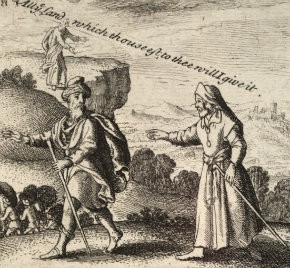Jewish and pacifist: Jesus and the Old Testament

The notion that God does not hesitate to use violence or destruction to punish evil and exact vengeance is widely held and often reinforced by the popular media. The Left Behind books and movies featured divinely caused mayhem. The History Channel’s series The Bible put divine violence on graphic display.
Such depictions raise questions for people both inside and outside the church. Beyond the obvious question of whether we can really love and worship a God of violence, a problem of ethics arises. It is a very short step from depicting violence as God’s way of responding to problems to seeing human violence as a way of helping God. I want to challenge both this view of God and this application.
Christians have long professed to believe that God is in Christ and that God is revealed in the story of Jesus Christ. It is also generally accepted that the narrative of Jesus shows that he refused to use violence in responding to his adversaries. Putting these two affirmations together leads us to describe God as one whose actions are consistent with the merciful and nonviolent Jesus.




